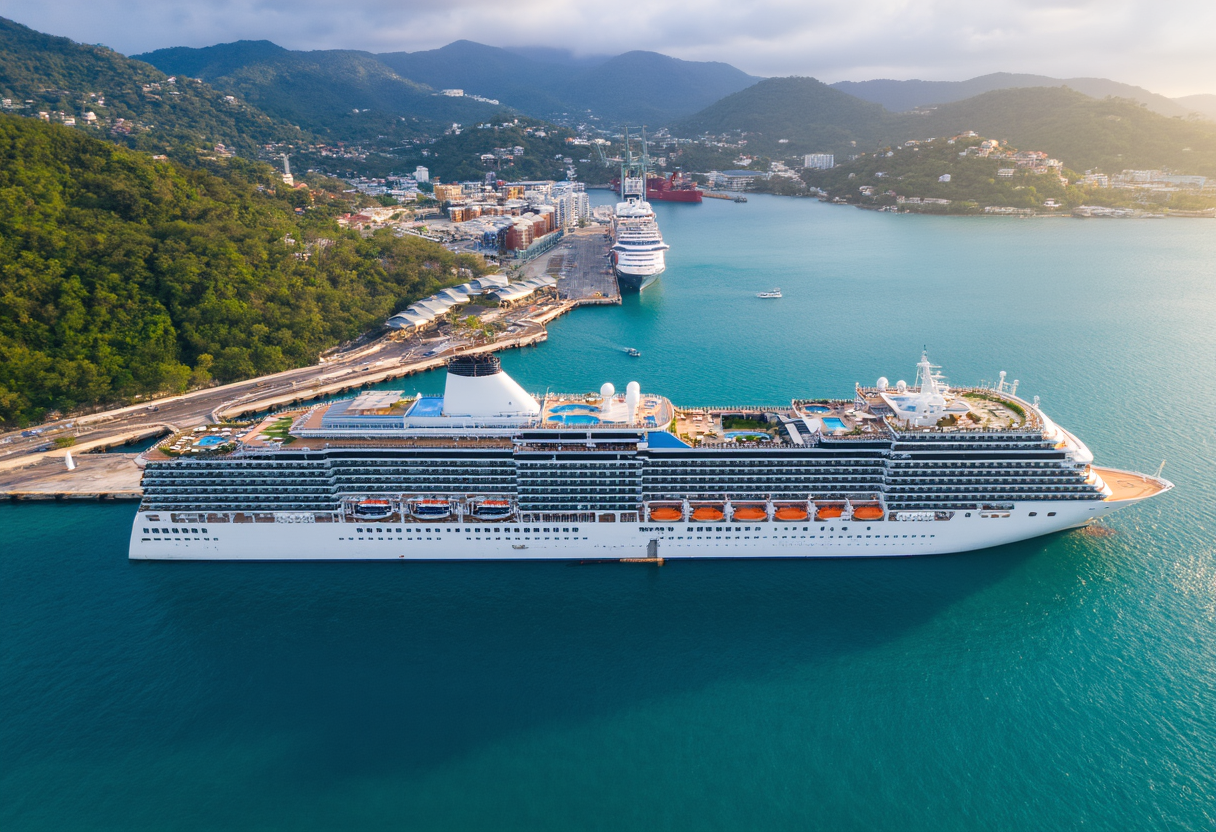The Rise of Cruise Tourism: Exploring New Horizons
Cruise tourism has witnessed a remarkable surge in popularity, reshaping global travel trends. This article delves into the factors driving this growth, such as innovative ship designs, personalized experiences, and the increasing culinary offerings onboard. Join us as we navigate the emerging destinations and assess how sustainability practices are being integrated into cruise tourism, ensuring that it meets the demands of conscious travelers.
The Surge in Popularity of Cruise Tourism
Cruise tourism is evolving at an unprecedented rate. With advancements in shipbuilding technology and a cultural shift towards experiential travel, more people than ever are embarking on cruise vacations. The unique blend of luxury and adventure offers travelers unparalleled experiences, from gourmet dining to diverse entertainment options onboard. Moreover, destinations that were once off the beaten path are now becoming accessible through cruise routes, which creates an enticing allure for potential tourists. It is essential to note that this transformation is a response to travelers' desires for personalized and immersive experiences, making cruise tourism a preferred choice for families, couples, and solo adventurers alike. This ongoing evolution positions cruise tourism as a powerful player in the tourism sector, reflecting broader societal trends towards exploration and enjoyment.
Innovative Fleets and Experiences
The cruise industry continually innovates to enhance the tourist experience. Modern cruise lines are not merely about transport; they offer a comprehensive lifestyle experience. Cutting-edge amenities like water parks, wellness centers, and themed entertainment have turned ships into floating resorts. Moreover, cruise tourism caters to various demographics, including families, seniors, and young adults. Adventure-focused itineraries feature kayaking, snorkeling, and unique shore excursions. As travelers seek individualized experiences, cruise companies are adjusting their services accordingly, integrating cultural nuances by offering local cuisine and activities, highlighting the adaptability and responsiveness of cruise tourism to global consumer preferences.
Emerging Destinations in Cruise Tourism
While classic destinations like the Caribbean remain popular, emerging locations are gaining traction in cruise tourism. Regions including Southeast Asia, Alaska, and the Mediterranean are enhancing their appeal through tailored cruise packages that spotlight local culture and landscapes. As more travelers look beyond traditional tourist hotspots, cruise operators are capitalizing on this trend by creating bespoke itineraries that immerse passengers in the local flora, fauna, and traditions. This shift not only enriches the traveler’s experience but also fosters sustainable tourism practices by encouraging visitors to appreciate and protect these unique locales. However, it also raises the question: how can we ensure that these emerging destinations benefit sustainably from the influx of cruise tourists?
The Environmental Impact and Sustainability
Sustainability is a critical consideration within cruise tourism. As environmental awareness grows among consumers, cruise lines are under pressure to adopt greener practices. From implementing waste reduction programs to transitioning to cleaner fuel sources, companies are increasingly prioritizing eco-friendly initiatives. Travelers today are often conscientious about their carbon footprint and seek out cruise options that reflect their values. The industry's response includes efforts to mitigate environmental impacts while promoting conservation. The challenge lies in finding a balance between increasing cruise tourism and preserving the destinations that attract tourists in the first place. Continuous dialogue and innovation are required to address these challenges effectively.
The Future of Cruise Tourism
As we look to the future, cruise tourism is set to continue its upward trajectory. Technological advancements will play a significant role in shaping the industry, from smarter booking systems to virtual reality experiences enhancing pre-cruise planning. Additionally, the incorporation of artificial intelligence may streamline guest services and personalize experiences further, catering to each traveler’s preferences. Moreover, partnerships with local governments and conservation organizations can enhance the sustainability efforts within cruise tourism, ensuring that it remains viable and appealing for generations to come. Future travelers will undoubtedly seek more than just beautiful views—they will desire purpose-driven experiences that align with their values.
Conclusion: Navigating the Future of an Exhilarating Industry
In summary, cruise tourism captures the essence of modern travel by blending adventure, luxury, and innovation. Travelers are drawn to the unique offerings and the promise of new horizons. As cruise companies respond to changing consumer trends and environmental needs, the future of cruise tourism looks promising. With a focused approach to sustainable practices, support from avid travelers, and a continual drive for innovation, cruise tourism is poised to boldly navigate the seas of the future.
